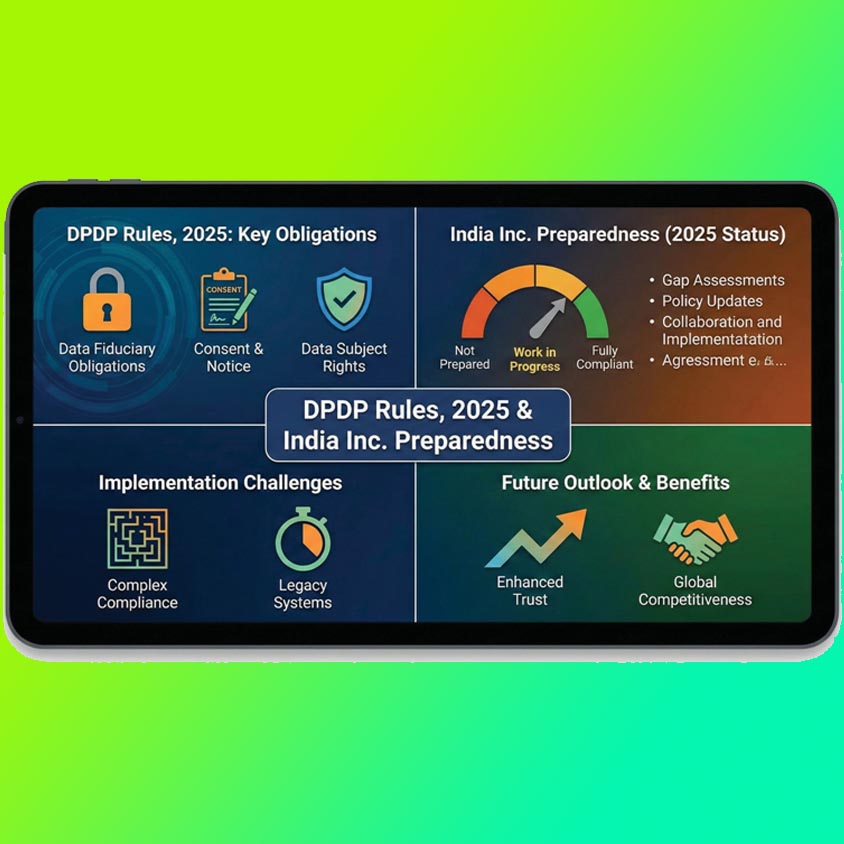
Asoke K. Laha, President & MD Interra IT
If e-commerce is a barometer to measure the penetration of internet in a country, one can assume that India is in its fast pace towards a fully-wired and online society. E-commerce is growing by leaps and bounds. Whether it is real or hyped-up is something that analysts can foretell.
A few illustrative descriptions may be relevant in this regard. The foremost is about the war between two American e-commerce companies – Amazon India and Walmart for supremacy in the Indian market. Amazon might have established its Indian subsidiary before Walmart. But the latter’s takeover of the homespun online distribution company – Flipkart – has changed the profile and reach of the U.S. online giant. Close to US$17-billion takeover deal, which will be hopefully completed by the end of this year, has created flutter in the corporate circles across the world. E-commerce companies have realized the potential of India as a future market for online business.
Does it mean that the brick-and-mortar distributive trade is on the back burner or it would cease to exist? If you visit some of the websites, which dish out data on online users, one may get perplexed and will conclude that physical retail will not have any time span left. I believe that the brick-and-mortar stores will continue to exist with enhanced and new business model.
Available data gives a different picture. The latest figures released by the Census Bureau of the US Department of Commerce says that the estimates of U.S. retail e-commerce sales for the first quarter of 2018, adjusted for seasonal variation, but not for price changes, were $123.7 billion, an increase of 3.9 per cent from the fourth quarter of 2017. Total retail sales for the first quarter of 2018 were estimated at $1,3067 billion, an increase of 0.2 per cent from the fourth quarter of 2017. The first quarter 2018 e-commerce estimate increased 16 per cent from the first quarter of 2017, while total retail sales increased 4.5 per cent in the same period. E-commerce sales in the first quarter of 2018 accounted for 9.5 per cent of the total sales. On a net adjusted basis, the estimate of U.S. retail-commerce sales for the first quarter of 2018 totalled $114.4 billion, a decrease of 19.9 per cent from the fourth quarter of 2017.
Less than 10% share of the e-commerce to the total retail trade in the US does not foretell a sweep of online trade in the coming years. Since the U.S. is one of the countries where e-commerce is relatively well entrenched, the low percentage of e-commerce penetration calls for introspection. It is definitely not a cake walk of the e-commerce over the conventional trade mode. The proportion of retail trade transacted in India and even China would be much lesser. Though the exact figures are not available, some analysts put that figure for India at around 3% of the total retail trade. China and India are the two countries, which can greatly influence the quantum of e-commerce transacted and people taking to online for trading. The reasons are that both countries are imbued with a large population, nearly half of world’s population, and a large proportion of tech-savvy people. Even if one targets at bringing close to 10% of the population to the online trading, it could be a fabulous catchment of people and that too in the upper-income group.
E-commerce also promotes disruption. Let us take new devices being innovated by Amazon and Walmart to reach out to their clients and ease their problems being faced in transacting businesses. They have technology platforms that are linked to banks to enable customers transact through dedicated banks. Walmart and Amazon are going to hire thousands of technical people for disrupting technologies to reach out to their customers and also to make their payments easy. For instance, Amazon, Google, Walmart and Facebook are entering the UPI payment system in India to help their clients to transact businesses through specific apps that they have developed. Most of the global operations based on disruptive technologies are being carried out in India, creating a large number of gainful jobs.
One of the handicaps that the e-commerce companies are facing in India is the last-mile connectivity. Online companies do not have the reach to penetrate tier-2 and -3 cities and rural areas with the result that they cannot spread their operations to these areas. Innovative technologies are being developed to address these problems.
Many wondered where the U.S. companies had gone and predicted the Chinese and Japanese dominance would be a bygone story. Amazon was present but was not aggressive enough to gobble up the market. Walmart’s presence was mostly in the business-to- business (B2B) segment and not in the online retail per se. In less than a year, things have changed. Now, the Chinese and Japanese companies are lying low and selling their stake. Recently, SoftBank sold its stake in Flipkart to Walmart at over US$ 4 billion. So are the cases with other foreign e-commerce companies which have invested in the Indian companies.
Can the U.S. dominance in B2C be taken for granted? It is difficult to say since there can be a shakeup after Reliance Retail has shown interest in the online business. Buoyed by the announcement of Reliance entry, it is being reported that many other Indian companies are strategizing their entry into the e-commerce space. Easily some of these companies can graduate into the league of global companies sooner or later. That way, India can make its presence felt in the global e-commerce space.
E-commerce, in spite of opportunities, also has many challenges. Internet is the backbone of e-commerce. Unfortunately, internet penetration in India is so far low compared to many developed and developing countries. But India has a very high penetration of mobile phones. It should be leveraged to bring e-commerce closer to the common people.
Loopholes in cyberlaws to regulate transactions in the net are another handicap. Large-scale theft of data and use of stored data for illegal purposes have led to widespread concerns across the world. India is not an exception.
Issues related to payment and tax are to be sorted out amicably. Electronic payment is settled through credit and debit cards. But their penetration in the Indian system is very low because of digital illiteracy and skepticism around use of such transaction modes. Also, e-commerce is a seamless worldwide trade. Tax collections and appropriation of collected taxes are complex under the e-commerce. It is important to evolve tax payer-friendly schemes to ease the likely impact on the system. Indeed, e-commerce has its place in India. But more important is to create an ecosystem for its growth and consolidation. The aim is not to replace e-commerce with traditional retail. Let brick-and-mortar retail coexist with online retail giving the customer the choice to pick either of the two or both to suit his/her convenience.
See What’s Next in Tech With the Fast Forward Newsletter
Tweets From @varindiamag
Nothing to see here - yet
When they Tweet, their Tweets will show up here.





























